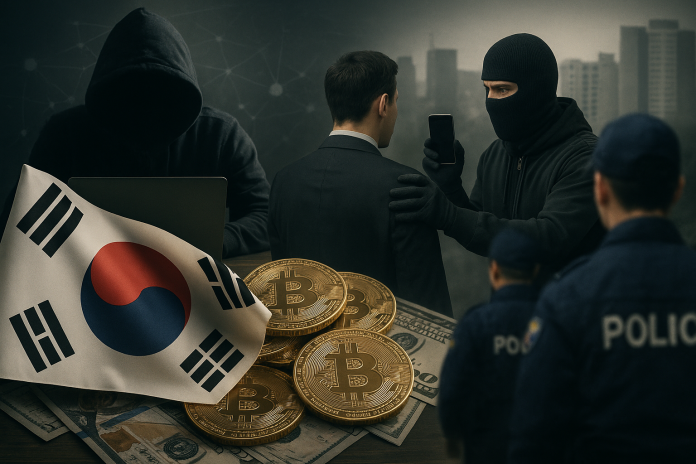
As South Korea’s cryptocurrency market expands rapidly, related crimes have surged in parallel. In 2024 alone, 2,191 individuals were apprehended for illegal activities involving digital assets — a 17-fold increase compared to 2017. The total damages exceeded 1.11 trillion KRW, with 8,206 reported victims.
Evolution and Diversification of Crypto Crime
Cryptocurrency-related crimes have evolved far beyond basic investment scams. Recently, scams powered by artificial intelligence (AI) have spiked dramatically, with revenues from such services growing by 1,900% year-over-year. Among the most prevalent is the so-called “pig butchering scam,” a hybrid of romance and investment fraud schemes.
Pig butchering scams involve perpetrators who build long-term trust with victims — often via social media or dating platforms — before luring them into fraudulent investment platforms and ultimately stealing their funds.
Market manipulation is also a serious issue. Wash trading volume on specific blockchains reportedly reached up to $2.57 billion USD (approx. 3.7 trillion KRW) in 2024 alone. These manipulative schemes are often concentrated in specific liquidity pools and driven by a small group of coordinated actors.
Institutional Response and Limitations
In July 2024, the South Korean government implemented the Virtual Asset User Protection Act to improve market transparency and investor safety. However, experts argue that the rapid evolution of criminal tactics and the cross-border nature of such crimes present inherent challenges to enforcement.
Traditional fraud tactics and Ponzi schemes are increasingly transitioning to crypto-based models. Due to the anonymous and decentralized nature of digital assets, tracking and prosecution remain difficult. Strengthening international cooperation and developing legal systems tailored to the characteristics of crypto assets is now imperative.
The exponential rise in crypto-related crimes poses not only a statistical concern but a profound threat to social trust and financial stability. Both the government and the industry must prioritize robust technical defenses, enhance international cooperation, and overhaul regulatory frameworks to foster a safer and more trustworthy digital asset ecosystem.






